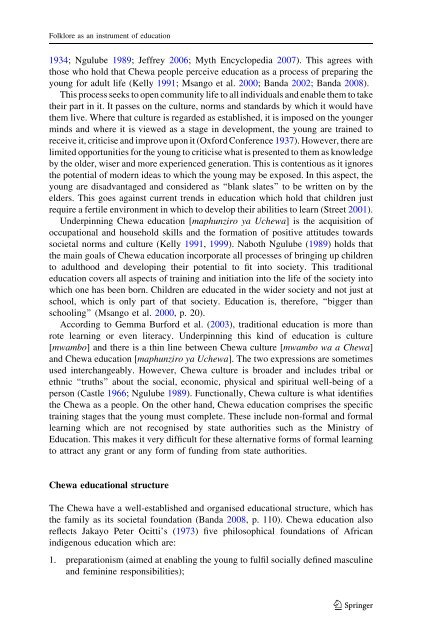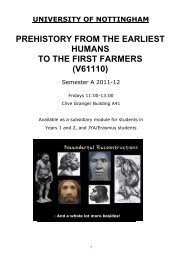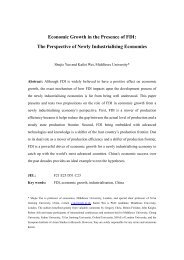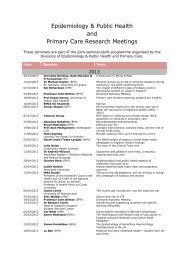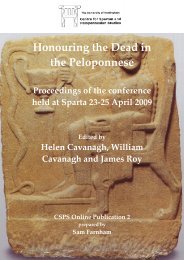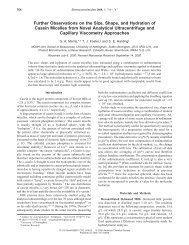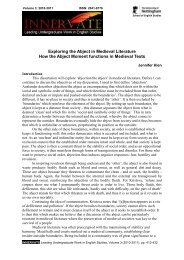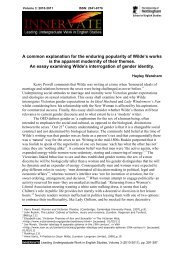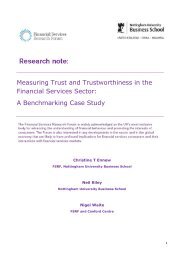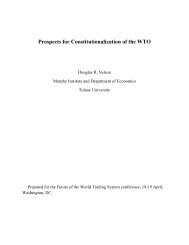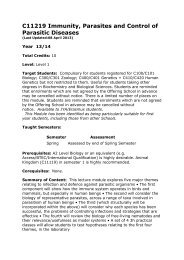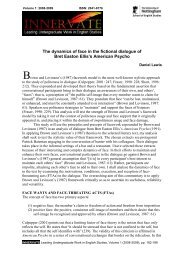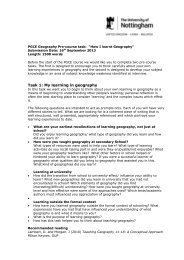Folklore as an instrument of education among the Chewa people of ...
Folklore as an instrument of education among the Chewa people of ...
Folklore as an instrument of education among the Chewa people of ...
Create successful ePaper yourself
Turn your PDF publications into a flip-book with our unique Google optimized e-Paper software.
<strong>Folklore</strong> <strong>as</strong> <strong>an</strong> <strong>instrument</strong> <strong>of</strong> <strong>education</strong><br />
1934; Ngulube 1989; Jeffrey 2006; Myth Encyclopedia 2007). This agrees with<br />
those who hold that <strong>Chewa</strong> <strong>people</strong> perceive <strong>education</strong> <strong>as</strong> a process <strong>of</strong> preparing <strong>the</strong><br />
young for adult life (Kelly 1991; Ms<strong>an</strong>go et al. 2000; B<strong>an</strong>da 2002; B<strong>an</strong>da 2008).<br />
This process seeks to open community life to all individuals <strong>an</strong>d enable <strong>the</strong>m to take<br />
<strong>the</strong>ir part in it. It p<strong>as</strong>ses on <strong>the</strong> culture, norms <strong>an</strong>d st<strong>an</strong>dards by which it would have<br />
<strong>the</strong>m live. Where that culture is regarded <strong>as</strong> established, it is imposed on <strong>the</strong> younger<br />
minds <strong>an</strong>d where it is viewed <strong>as</strong> a stage in development, <strong>the</strong> young are trained to<br />
receive it, criticise <strong>an</strong>d improve upon it (Oxford Conference 1937). However, <strong>the</strong>re are<br />
limited opportunities for <strong>the</strong> young to criticise what is presented to <strong>the</strong>m <strong>as</strong> knowledge<br />
by <strong>the</strong> older, wiser <strong>an</strong>d more experienced generation. This is contentious <strong>as</strong> it ignores<br />
<strong>the</strong> potential <strong>of</strong> modern ide<strong>as</strong> to which <strong>the</strong> young may be exposed. In this <strong>as</strong>pect, <strong>the</strong><br />
young are disadv<strong>an</strong>taged <strong>an</strong>d considered <strong>as</strong> ‘‘bl<strong>an</strong>k slates’’ to be written on by <strong>the</strong><br />
elders. This goes against current trends in <strong>education</strong> which hold that children just<br />
require a fertile environment in which to develop <strong>the</strong>ir abilities to learn (Street 2001).<br />
Underpinning <strong>Chewa</strong> <strong>education</strong> [maphunziro ya Uchewa] is <strong>the</strong> acquisition <strong>of</strong><br />
occupational <strong>an</strong>d household skills <strong>an</strong>d <strong>the</strong> formation <strong>of</strong> positive attitudes towards<br />
societal norms <strong>an</strong>d culture (Kelly 1991, 1999). Naboth Ngulube (1989) holds that<br />
<strong>the</strong> main goals <strong>of</strong> <strong>Chewa</strong> <strong>education</strong> incorporate all processes <strong>of</strong> bringing up children<br />
to adulthood <strong>an</strong>d developing <strong>the</strong>ir potential to fit into society. This traditional<br />
<strong>education</strong> covers all <strong>as</strong>pects <strong>of</strong> training <strong>an</strong>d initiation into <strong>the</strong> life <strong>of</strong> <strong>the</strong> society into<br />
which one h<strong>as</strong> been born. Children are educated in <strong>the</strong> wider society <strong>an</strong>d not just at<br />
school, which is only part <strong>of</strong> that society. Education is, <strong>the</strong>refore, ‘‘bigger th<strong>an</strong><br />
schooling’’ (Ms<strong>an</strong>go et al. 2000, p. 20).<br />
According to Gemma Burford et al. (2003), traditional <strong>education</strong> is more th<strong>an</strong><br />
rote learning or even literacy. Underpinning this kind <strong>of</strong> <strong>education</strong> is culture<br />
[mwambo] <strong>an</strong>d <strong>the</strong>re is a thin line between <strong>Chewa</strong> culture [mwambo wa a <strong>Chewa</strong>]<br />
<strong>an</strong>d <strong>Chewa</strong> <strong>education</strong> [maphunziro ya Uchewa]. The two expressions are sometimes<br />
used interch<strong>an</strong>geably. However, <strong>Chewa</strong> culture is broader <strong>an</strong>d includes tribal or<br />
ethnic ‘‘truths’’ about <strong>the</strong> social, economic, physical <strong>an</strong>d spiritual well-being <strong>of</strong> a<br />
person (C<strong>as</strong>tle 1966; Ngulube 1989). Functionally, <strong>Chewa</strong> culture is what identifies<br />
<strong>the</strong> <strong>Chewa</strong> <strong>as</strong> a <strong>people</strong>. On <strong>the</strong> o<strong>the</strong>r h<strong>an</strong>d, <strong>Chewa</strong> <strong>education</strong> comprises <strong>the</strong> specific<br />
training stages that <strong>the</strong> young must complete. These include non-formal <strong>an</strong>d formal<br />
learning which are not recognised by state authorities such <strong>as</strong> <strong>the</strong> Ministry <strong>of</strong><br />
Education. This makes it very difficult for <strong>the</strong>se alternative forms <strong>of</strong> formal learning<br />
to attract <strong>an</strong>y gr<strong>an</strong>t or <strong>an</strong>y form <strong>of</strong> funding from state authorities.<br />
<strong>Chewa</strong> <strong>education</strong>al structure<br />
The <strong>Chewa</strong> have a well-established <strong>an</strong>d org<strong>an</strong>ised <strong>education</strong>al structure, which h<strong>as</strong><br />
<strong>the</strong> family <strong>as</strong> its societal foundation (B<strong>an</strong>da 2008, p. 110). <strong>Chewa</strong> <strong>education</strong> also<br />
reflects Jakayo Peter Ocitti’s (1973) five philosophical foundations <strong>of</strong> Afric<strong>an</strong><br />
indigenous <strong>education</strong> which are:<br />
1. preparationism (aimed at enabling <strong>the</strong> young to fulfil socially defined m<strong>as</strong>culine<br />
<strong>an</strong>d feminine responsibilities);<br />
123


